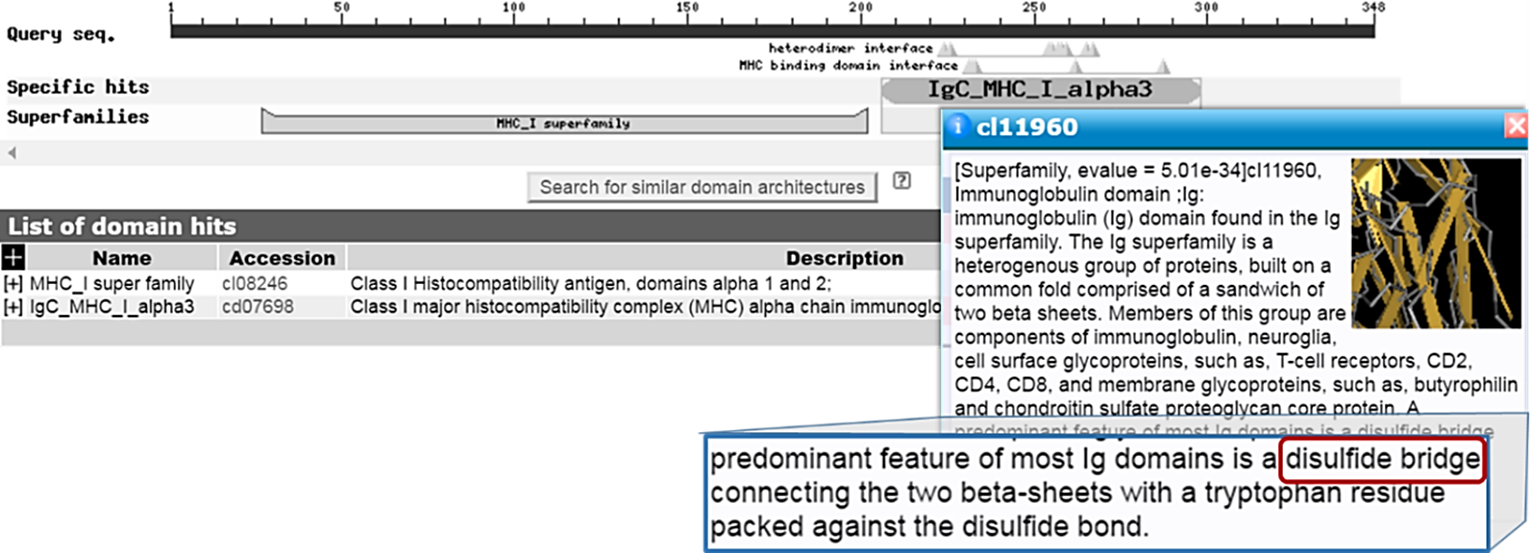Content
Jeff's Case Study
Welcome to Your Patient!
 Jeff, 46 year old American male of Scots descent has come to you for a second opinion... Jeff, 46 year old American male of Scots descent has come to you for a second opinion...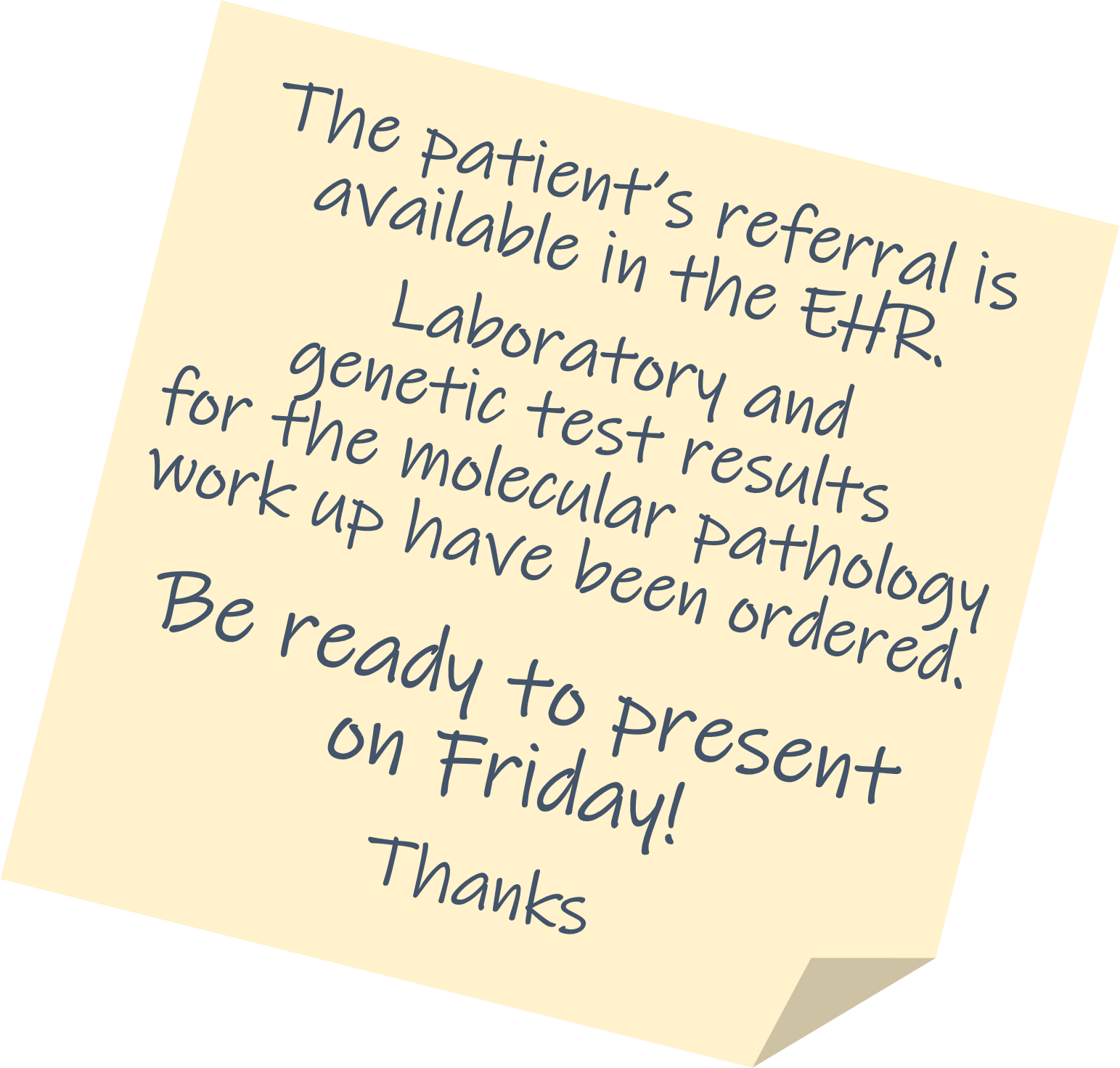
Previous Diagnosis: Cirrhosis of the liver and Type 1 Diabetes, due to chronic alcoholism Key Symptoms: Elevated liver enzymes, excess ascites fluid and an enlarged spleen (splenomegaly) In the two months since his diagnosis, the insulin treatment and significant dietary changes have not seemed to improve things much, indeed his condition has deteriorated (severe fatigue). He claims he is not, nor has he been an alcoholic – used to have 1-2 glasses of beer a few times a week and had not had anything for a while before being diagnosed – so he really doesn’t think this diagnosis makes any sense. |
Researching the Referral
Here's a link to the Referral that Jeff's Doctor sent. Read it over to learn more about Jeff and his case, then do the following steps to learn more about the preliminary diagnosis.- Search MedGen (https://www.ncbi.nlm.nih.gov/medgen/) with these symptoms:
 If you need it, you can click here to get to a link for the Medgen record page.
If you need it, you can click here to get to a link for the Medgen record page.
![]() Based on the results of that search, what is a possible diagnosis for Jeff and how does this correspond to the preliminary diagnosis listed in the referral?
Based on the results of that search, what is a possible diagnosis for Jeff and how does this correspond to the preliminary diagnosis listed in the referral?
- In the “Term Hierarchy” section of this record, you can see a few sub-types of Hereditary Hemochromatosis. Click the names of the disorders to open the MedGen records to read about each sub-type.

What is/are the major differences in the sub-types of Hereditary Hemochromatosis?
- GeneReviews® is a project run by the University of Washington producing expert-authored, point-of-care information with clinically relevant and medically actionable information for inherited conditions. It is an incredible review article-type of resource, and is thus featured in it's own section on relevant MedGen records - as an abstract with links to key sections.
-
- To learn more about this disorder, in the "Disease Characteristics" section scan the summary "Excerpted from the GeneReview" and consider accessing and reading the whole article.
-
- To begin your case work-up, note the links to specific GeneReview sections below and click on the link "Differential Diagnosis"
Which other conditions you should consider during your work-up?
-
- To learn about which test(s) could be ordered to diagnose this condition, click the link to the "Diagnosis" section.
Which analytes are "flagged" as outside normal ranges?
-
- GeneReview articles contain information on genetic testing when relevant for that disorder or condition. Continue reading the "Diagnosis" section through the "Establishing the Diagnosis" sub-section.
![]()
For this disorder, is a genetic test(s) recommended for validation?
- To assist you further in learning about this disorder and for preparation for discussions with your patient, there are links to:
- many relevant publications available in PubMed - you can look on this record for these as well as on other closely-related disorder records that you saw linked in the "Term Hierarchy" section
- Clinical Trials, when available, linked in the "Clinical Resources" section on the right-hand side of the page.
- often there are a few "Consumer Resources" listed on the right-hand side of the page - which can helpful for patient education
 You discuss the diagnosis and hand Jeff some Patient Education materials. You discuss the diagnosis and hand Jeff some Patient Education materials.He has heard that this is may be a genetic condition. He has a twin sister and a brother and is concerned that they may be affected. He’d like to have a DNA test to see if the cause of his disorder is genetic and also see if he can find out specifically what is wrong with him on a personal level, even though it may not change his prognosis or therapy. |
Finding a Genetic Test and Understanding the Results
- From the MedGen record, you can quickly link (on the right-hand side of the page) to relevant Genetic Tests that are available for this disorder or condition.
Please note The information shown in the NIH Genetic Testing Registry (GTR) is submitted by the testing laboratory. You should look at the "Laboratory Contact" tab for ways to contact them directly for any question you have about the test.
 If you need it, you can click here to get to a link for the Medgen record page.
If you need it, you can click here to get to a link for the Medgen record page.
What is/are the specific gene(s) and variation(s) identified in Jeff?
- To validate what is asserted by this clinical testing laboratory, search NCBI’s ClinVar database (https://www.ncbi.nlm.nih.gov/clinvar/) with: HFE p.Cys282Tyr
 If you need it, you can click here to get to a link for the ClinVar record page.
If you need it, you can click here to get to a link for the ClinVar record page.
![]() What position in the Gene and in the Protein is this variant located?
What position in the Gene and in the Protein is this variant located?
(Write down the HGVS information for the NG_ g. & the NP_ p.!)
![]()
What does the ClinVar record indicate in the “Interpretation” field for this gene and variation?
In the middle section, click on "Conditions" to see a summary of interpretations per disorder or condition. This variation may have been submitted with information about several different disorders, conditions or even risk factors.
You can click on any relevant "Variation/condition record" links to learn more about what information was provided for that particular one from the different sources.
 You discuss the results of the genetic test and diagnosis with Jeff and write a referral to a hematologist to discuss treatment. You discuss the results of the genetic test and diagnosis with Jeff and write a referral to a hematologist to discuss treatment.He is a pretty curious guy and is interested in learning more about how the genetic variations found in his genome has impacted his biology and why he's exeriencing such a variety of symptoms in so many of his organs. Helping him to understand the specific mechanism causing his disorder can help him feel more able to participate in his care plan. |
Learning About the Implicated Gene
- On the MedGen record, click the link for the Gene identified as having a variant in Jeff.
 If you need it, you can click here to get to a link for the Medgen record page.
If you need it, you can click here to get to a link for the Medgen record page.
 Or click here to get a link to go straight to the Gene record page.
Or click here to get a link to go straight to the Gene record page.
Here's some additional information which may also help you - I've pulled it together from an old molecular biology textbook available on the NCBI Bookshelf!
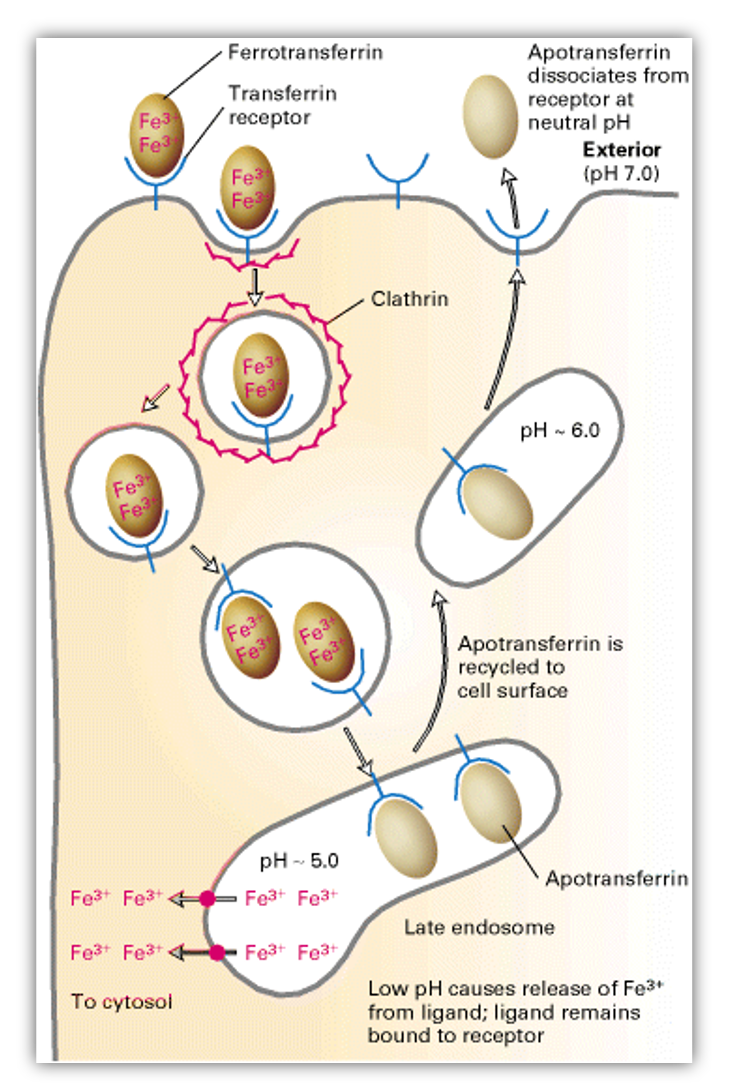 Iron transport and the Transferrin Cycle: Iron transport and the Transferrin Cycle:
|
- The Gene Ontology (GO) Consortium's mission is to build a comprehensive, human-readable and computable, hierarchical knowledgebase for the molecular functions, cellular locations, and processes that gene products (usually proteins) carry out.
What type(s) of process(es) is/are this protein normally involved with?
What specific function(s) does this protein have?
In which component(s) (sub-cellular location) is this protein normally found?
Does this make sense based on the Gene Summary of the Gene that you found above?
- Scroll down to the Gene record's “Expression” section to see in which tissues this gene has been observed to be expressed.
![]()
In which tissues has this gene been found to be expressed?
![]()
Do any of these tissues correlate with those associated with Jeff's symptoms?
Mapping and Understanding the Impact of the Variant
So, you now know information about what the "wild-type" or non-variant-containing gene product does and where. How might your patient's variant impact ths gene and it's product? First, it depends upon where the variant is located and then it depends upon it's impact in that location.Click here to see a graphic that I made based on the central dogma of molecular biology and how to systematically step through an assessment of variant location and possible physiological impact.
A Review of the Central Dogma of Molecular Biology & How to Assess and Predict Variant Impact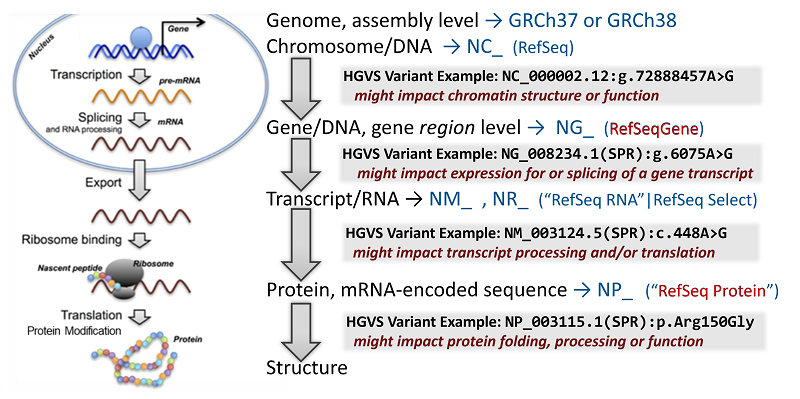 |
- Genome/Chromosome: First, let's map where that particular gene is within the chromosome.
![]()
On which chromosome is the implicated gene (and, presumably, the variant)?
- Gene/Transcript: Now that you know the chromosome the gene and variant are on, it will be imporant to focus in on the gene itself.

(Visualize a vertical line at the variant’s position to map it on the gene (green), mRNA (purple) and protein (red) bars. On the live site, you can type in the variant’s gene position, from the genetic test result, into the “Find” box to automatically zoom in!)
- Protein: Since you've identified that the variant is located in the coding region of the gene and transcript, identifying the position and type of altered protein residue will be important to figuring out potential impact on the protein's structure and function.
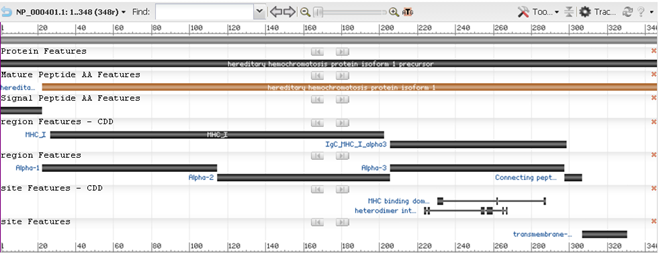
![]() Based on the type (amino acid change) and/or position of the variant in the protein, can you predict what might be the mechanism for impacting the protein (such as altering protein folding, impacting the binding of a cofactor, ligand or substrate, changing a residue often targeted for modification, or truncating the production of the rest of the encoded protein)?
Based on the type (amino acid change) and/or position of the variant in the protein, can you predict what might be the mechanism for impacting the protein (such as altering protein folding, impacting the binding of a cofactor, ligand or substrate, changing a residue often targeted for modification, or truncating the production of the rest of the encoded protein)?
- Sequence-based Structure: If the variant is located in an annotated domain, knowing what function that domain often confers to the protein may give an idea on how it may alter the function of the protein.
![]()
In which domain is Jeff’s genetic variant located? ![]()
Based on the description of this domain, what do you predict is the impact of the genetic variation on the protein?
- Protein Structure: Being able to see where the impacted residue is located within a structure and in context with other protein structural elements as well as cofactors, ligands, or substrate - can provide some insight on how changing it may impact the protein's function.
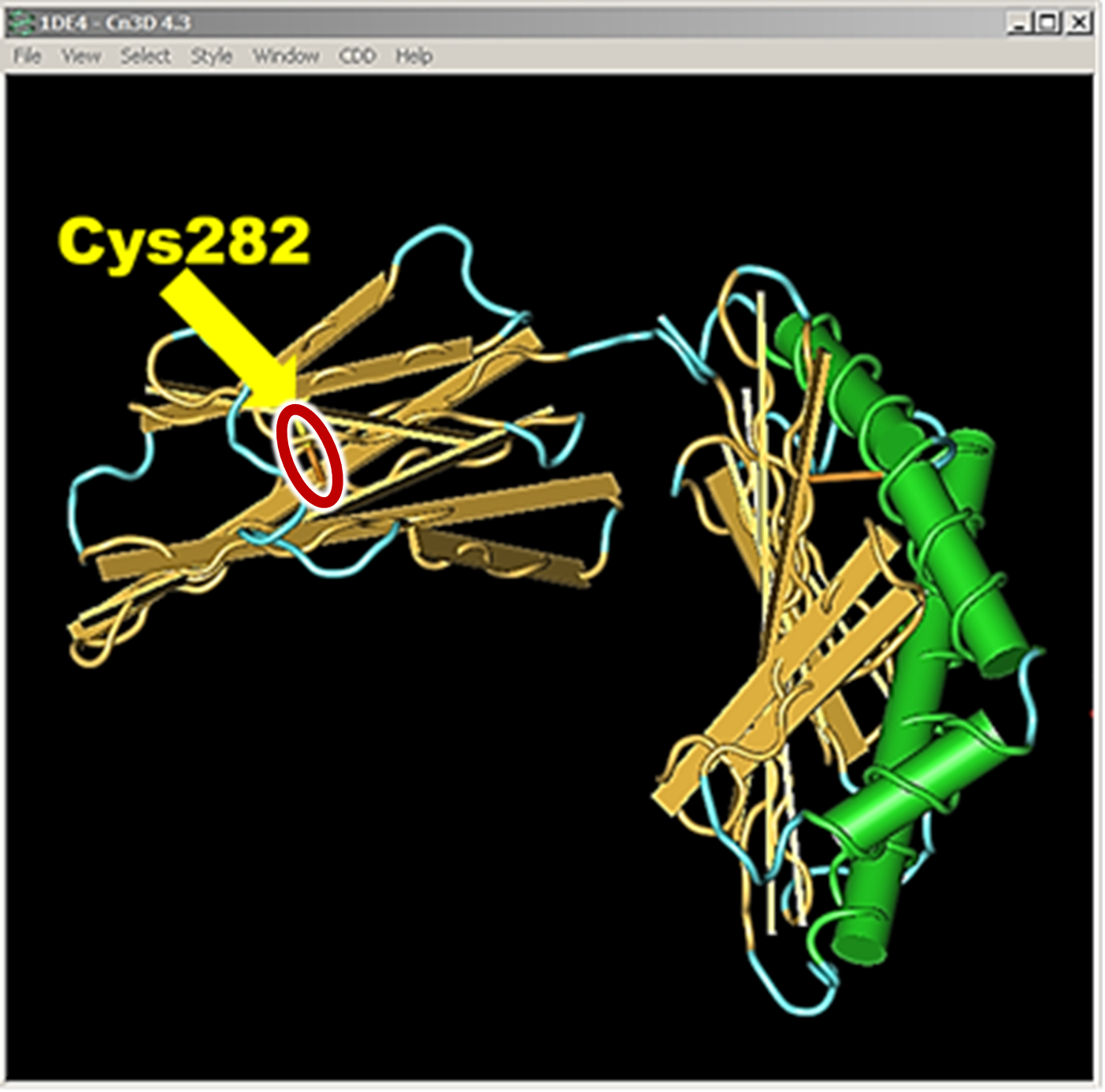 To make things easier for you right now, here’s a picture of the 3D crystal structure for the HFE Protein (PDB accession: 1DE4) in NCBI’s Cn3D Viewer ---->
To make things easier for you right now, here’s a picture of the 3D crystal structure for the HFE Protein (PDB accession: 1DE4) in NCBI’s Cn3D Viewer ---->In the 3D structure you can see the locations of the amino acids affected by the genetic variations. The Cys282 position is shown in a yellow and participates in a disulfide bond (with another cysteine side chain, orange stick) holding together two beta sheets in an Ig Fold.
![]() What would the genetic variation p.Cys282Tyr likely do to this structure and what might be the impact on the ability of this protein to function?
What would the genetic variation p.Cys282Tyr likely do to this structure and what might be the impact on the ability of this protein to function?
Click here for a hint.
(Hint: De Almeida, SF, and M De Sousa. “The Unfolded Protein Response Haemochromatosis.” Journal of Cellular and Molecular Medicine. PMC. Web. 7 Sept. 2016. https://www.ncbi.nlm.nih.gov/pmc/articles/PMC3822533/)
- Now, to understand the role of the HFE protein in physiology, let’s look at two other 3D Structures that are related to this protein’s function and purpose (PDB accessions 1SUV – Transferrin Receptor complexed with Ferro-Transferrin & 1DE4 – Transferrin Receptor complexed with the HFE protein).
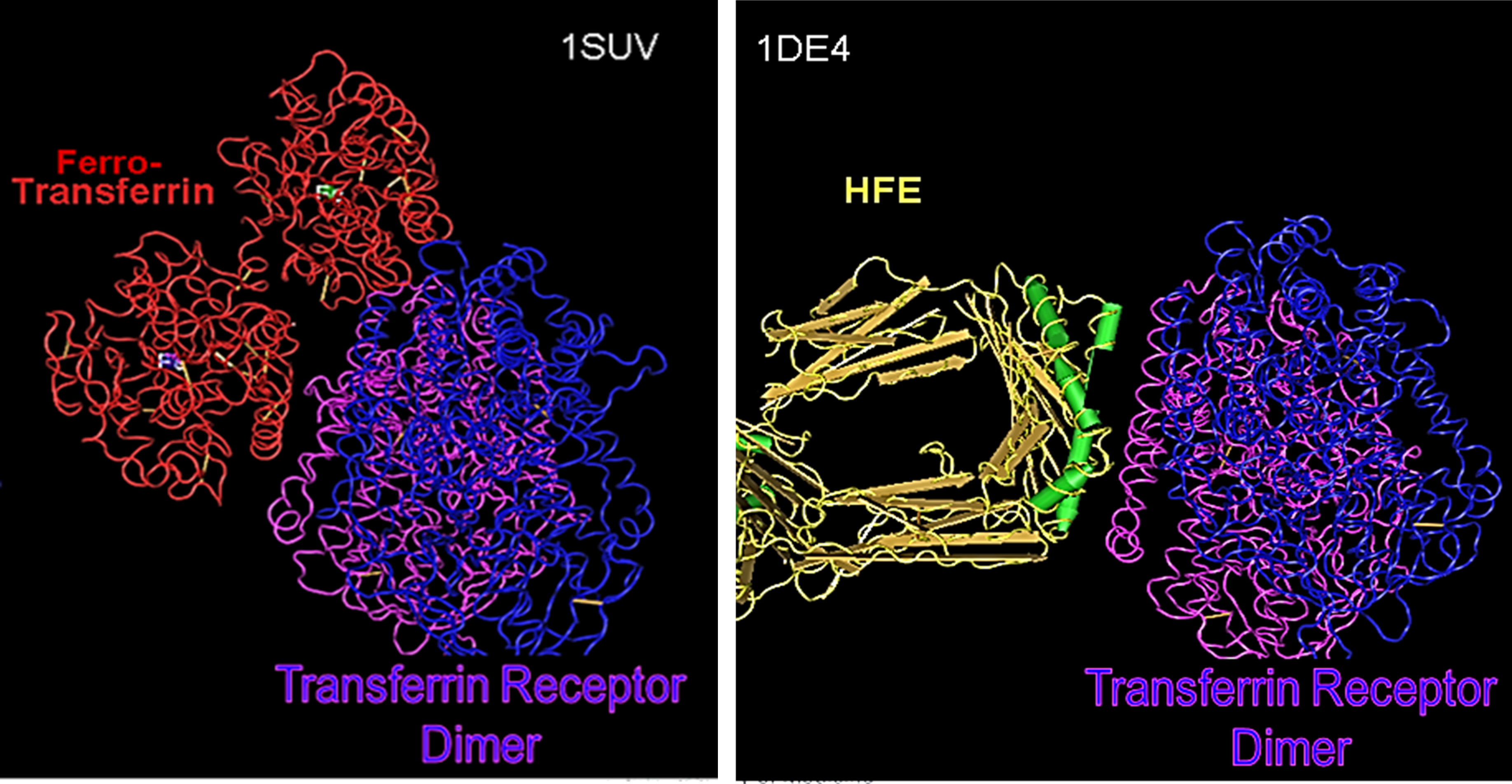
In both structures, the Transferrin Receptor is shown in purple & blue. In the image on the left, shown in red, is Ferro-Transferrin (Transferrin carrying it's Iron payload) docking with Transferrin Receptor. On the right in yellow, orange & green (colored the way it was shown in the previous structure picture) is a HFE protein dimer bound to the Transferrin Receptor.![]() Where does the HFE Protein bind on the Transferrin Receptor and how does that relate to where Ferro-Tranferrin binds? In "enzymology terms" what might you call the HFE Protein?
Where does the HFE Protein bind on the Transferrin Receptor and how does that relate to where Ferro-Tranferrin binds? In "enzymology terms" what might you call the HFE Protein?
What is wrong with Jeff?

Well? What do you think?
 Jeff asks:
Jeff asks:
- "What is wrong with me?"
- "Are we sure this is the right diagnosis this time?"
- "What do we do now?"
Click here to review some things to consider when formulating the answer to his questions.
-
-
- Which gene is impacted by the genetic variation and what does the gene product normally "do"?
- what is it's biomolecular function?
- what is it's impact on cellular physiology?
- in which cells/tissues is the gene product usually expressed?
- Based on the patient's variation(s):
- what do you think this would do to the gene product's structure and biomolecular function?
- what would this do to cellular physiology?
- what tissues or organs impact be impacted?
- Based on the proposed impacted-tissues/organs, may some of the the patient's symptoms be explained by this? (validating his experience)
- Which gene is impacted by the genetic variation and what does the gene product normally "do"?
-
Click here for some more clinically-related considerations.
-
-
- What is his specific disorder or condition? (Final diagnosis)
- How do you know this is the correct diagnosis? (Take everything into account, - clinical features, lab and genetic test results, as well as response to any previous therapies.)
- What can you do with the knowledge of the precise genetic lesion that causes this disorder? (Think about your next steps in case management planning.)
-
Take-away Message!
Genetic disorders are now often being classified based on the impacted gene or genes and sometimes even the specific genetic variations associated with them. The closer you can get to a specific diagnosts (with subtype, for example), the more likely you will be able to find a targeted and thus more effective (and possibly less deleterious) therapy.
To interpret the impact of a genetic variant that causes a non-synonymous amino acid substitution at a generally conserved cysteine residue - you should first consider that this might be a disulfide-bridge disruptor. The impact on mis-folding of a protein can vary from decreasing or preventing enzymatic or binding function to activation of the unfolded protein response which would cause degradation of the protein.
Understanding what the protein's normal role in physiology is and in which tissues - can shed light on how this genetic variant is impacting the patient on molecular, cellular, organ-system, and whole body symptomatic levels.
Answer:
Last Reviewed: August 23, 2022

